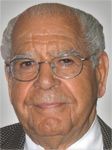Article
Neurostimulation in urology: Untapped potential?
Dr. Tanagho, professor emeritus of urology at the University of California, San Francisco, discusses the history of neurostimulation in urology, its current applications, and possible future directions.

Q As perhaps the founding father of the practical use of neurostimulation in urology, please briefly discuss some of the history of this treatment.
A It goes back to the mid- or late 1970s, when I was approached by National Institutes of Health researchers to get involved in a project they were working on. The NIH had a special division on neuroprostheses, and they were quite interested in a publication that came out in the mid-1970s describing neurostimulation of the spinal cord to induce micturition in spinal cord injury patients (J Urol 1975; 113:338-40). That work was led by a neurosurgeon, Dr. Blaine Nashold, and colleagues at Duke University. He reported on eight patients in whom he had implanted an electrode in the spinal cord in the sacral segment and, by stimulating it, managed to induce bladder contraction and bladder emptying.
Q Are you surprised by the current acceptance of neurostimulation and its widespread use?

Q Please compare posterior tibial nerve stimulation, pudendal nerve stimulation, and sacral nerve root stimulation.
A The more peripheral you go, the easier the procedure is. I think the most effective approach is the most central neural control, which allows for the greatest specificity. As you move away from the central nervous system itself to the peripheral nerves, you lose some specificity and may be recruiting some other nerve fiber that you might not need to recruit.
Q How do you see the role of neurostimulation in nonobstructive retention?
A Neurostimulation is very effective for this indication, and that's where it has an advantage over many other treatments. It can deal with both functional issues and organic loss of neural control. For functional issues, it can permit the bladder to fill to normal capacity and to initiate normal voiding by detrusor contraction and sphincteric relaxation, permitting complete emptying. It's also valuable in patients with a significant neural loss that you can replace by directly stimulating specific nerves that control bladder activity. You can achieve full control.
Q How about the role of neurostimulation in overactive bladder?
A It's very effective in that regard. Overactive bladder, of course, can be neuropathic, due to nerve damage, but often it is functional in nature and, in some cases, we don't even know what the etiology is.
When we initially started developing what we called the bladder pacemaker, as we were trying to control the total function of the urinary bladder and all its aspects, we developed upper motor neural lesions in a colony of beagle dogs in which we implanted the device in its primitive, initial form. All the animals had very spastic, overactive neuropathic bladders.




